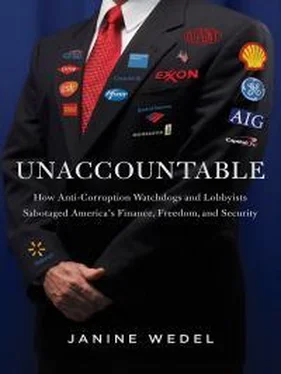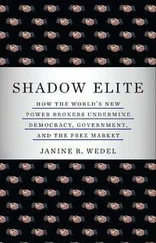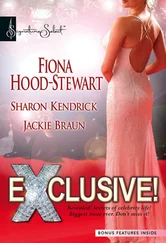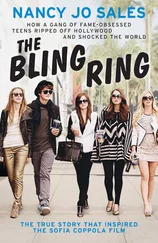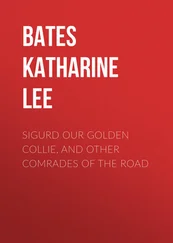In the 1990s, CEOs developed a laser-like focus on the stock price, in part because companies started paying them with stock options, which was supposed to align the interest of shareholders with that of the chief executive. Now they were incentivized to gin up quarterly earnings for the short-term stock “pop.” In well-choreographed performative routines, CEOs trumpeted their numbers to the media and investors, all to keep their stock prices high. With their shorter-term focus, CEOs sought to keep the stock price high at the right times, to make sure quarterly earnings “beat expectations,” even when, internally, they didn’t. 21This increasing use of stock options gave “senior managers a strong incentive to mislead investors about the true condition of their companies,” as New Yorker financial journalist John Cassidy found. 22The result is that the wool was pulled over the eyes of the average investor—from minor accounting dodges or massaging of those quarterly results, to the massive fraud that took down Enron, Worldcom, Tyco, and other big companies in the late 1990s and early 2000s.
Changes in the media were a great enabler of truth-challenged performance. The new cable business-news channels, which thrived on excitement, gave executives a powerful platform to sell their version of corporate reality to average investors, according to a writer who worked in TV financial news during the dot-com era. 23
Changes in the media, too, enabled—even exacerbated—the insider-outsider divide. Wall Street helped, deploying TV-ready, stock-touting “analysts” who seemed unbiased, even though ethical conflicts were unavoidable: their employers, investment firms, were actually getting business (and other insider perks) from those companies the analysts were often promoting. 24Throughout the 1990s to the 2000s, there were cases of Wall Street analysts going on the air and talking up a stock while internally they were telling their people in the firm that the stocks were, in the words of one of the most infamous of them, “POS (pieces of shit).”
Here is how Henry Blodget, a well-known analyst, characterized two stocks publicly to unwitting potential buyers and shareholders, versus how he characterized them internally: 25
On a dot-com called Lifeminders:
In Public: “We think [Lifeminders] presents an attractive investment.”—12/21/00
Internal: “I can’t believe what a POS [piece of shit] that thing is.”—12/04/00
On a dot-com called Infoseek:
In Public: Blodget rates it a Neutral to Accumulate—12/19/99
Internal: The stock is a “. . . dog . . .”—12/19/99
Blodget’s many appearances on business-news channels were part of the elaborate performance expected of “star” analysts at that time. 26Many analysts also played a role in so-called IPO “roadshows,” when a new stock was pitched to investors.
With the focus squarely on the appearances of the moment, executives lulled the public into thinking things were rosy by putting up what was really a flimsy façade. The consequences, of course, are borne by “Main Street,” not Wall Street. Main Street investors might have benefited short-term from inflated stock prices, but most didn’t know when to sell, or even that they should sell, while many executives did. 27
Wall Street analysts were eventually taken to task for their performances, but only after the damage was done. In 2003, top investment banks were forced by regulators to pay $1.4 billion in fines and to erect walls separating their banking departments from their analysts. 28
And over on the general-news cable channels, another very insidious performance was (and still is) being staged. While there’s been endless hand-wringing over political polarization and cheap opinion found on the cable channels, this trend deserves at least as much scrutiny: the use of pundits, analysts, or “experts”—often former high government officials—who now have a swirl of undisclosed or only partially revealed interests that the viewer knows nothing about. Many of these players are, in fact, shadow lobbyists or shadow elites.
That something smells bad has not been lost on us. A citizen-driven petition that went up on the White House website in March 2013 is telling. It asked the Obama administration to “require Congressmen & Senators to wear logos of their financial backers on their clothing, much like NASCAR drivers do.” That suggestion could go even farther. As we saw earlier, often it is former politicians and government officials who hold sway. We see them on TV, and it would indeed be very illuminating if they wore sponsorship logos. 29
One who could have used a logo might be former Homeland Security secretary Michael Chertoff. He took to the airwaves virtually nonstop in the weeks following the 2009 Christmas Day bombing attempt aboard a Northwest Airlines flight from Amsterdam to Detroit. He pushed for full-body scanners as a cure-all for lax airport security. His eponymous consulting firm represented the only company, Rapiscan Systems, to have initially qualified for the government contract to manufacture the scanners. 30But the media outlets that used him as an expert failed to mention this fact. 31And when the New York Times interviewed him on the subject, speaking to him twice, reporters did not inquire whether he had any financial interest in the matter. 32
Indeed, nimble power brokers are all over the media. In 2010, The Nation conducted a four-month investigation and found one thing that bound together seemingly very different cable networks: 33
Since 2007 at least seventy-five registered lobbyists, public relations representatives and corporate officials—people paid by companies and trade groups to manage their public image and promote their financial and political interests—have appeared on MSNBC, Fox News, CNN, CNBC and Fox Business Network with no disclosure of the corporate interests that had paid them. Many have been regulars on more than one of the cable networks, turning in dozens—and in some cases hundreds—of appearances.
These power brokers (and the networks that put them on the air) are operating beyond accountability—without disclosing who they are shilling for.
The Nation article also makes another excellent and troubling point: that adding a role as a pundit can ease access to policymakers that the person might not get if he or she were just a registered lobbyist.
How did these pundit-“experts” become so popular so easily? Part of the answer lies in simple economics. With cable companies eager to squeeze more profit out of newsroom budgets, a programmer knows that talk is literally cheap, or at least far cheaper than reported stories. Stories created in-house might require a correspondent, a producer, a photographer, and an editor. Booking an “expert” or “pundit” requires none of that, aside from the phone calls, the logistics, and research for the anchor. This was true even before the Internet emerged, and a former producer at a top cable-news outlet in the late 1990s and early 2000s (who does not want his name used) describes the many challenges faced in ascertaining the agendas of guests, as well as the struggle to disclose their agendas.
In listening to booker phone calls, and in viewing the research given to the anchor, there was not much attention paid to whether a former government official might now be eager to appear because they are shilling for a consultant group or company. In part, this was simply a new phenomenon. Guests didn’t used to all have these vast professional portfolios they have now, or if they did, it wasn’t quite known. And also, it was a stress-filled environment and it’s hard to imagine having enough time to investigate a tangle of interests while also getting a show on the air. If there was a glaring conflict, a guest might be cancelled, but this was very rare. Even if a booker did emphasize that their guest might have a conflicting interest, that didn’t mean that a disclosure always ended up on the air. A writer decides whether to put it in the copy the anchor reads. An anchor reads the research and decides whether it matters and is worth mentioning in the copy or the interview. A line producer or a technical director would have the choice to toggle among two different “fonts,” or the titles of the guests [shown on the air]. Almost always, the default title used was “former government so-and-so,” even if that had little to do with what the person was doing or representing in the here and now.
Читать дальше
